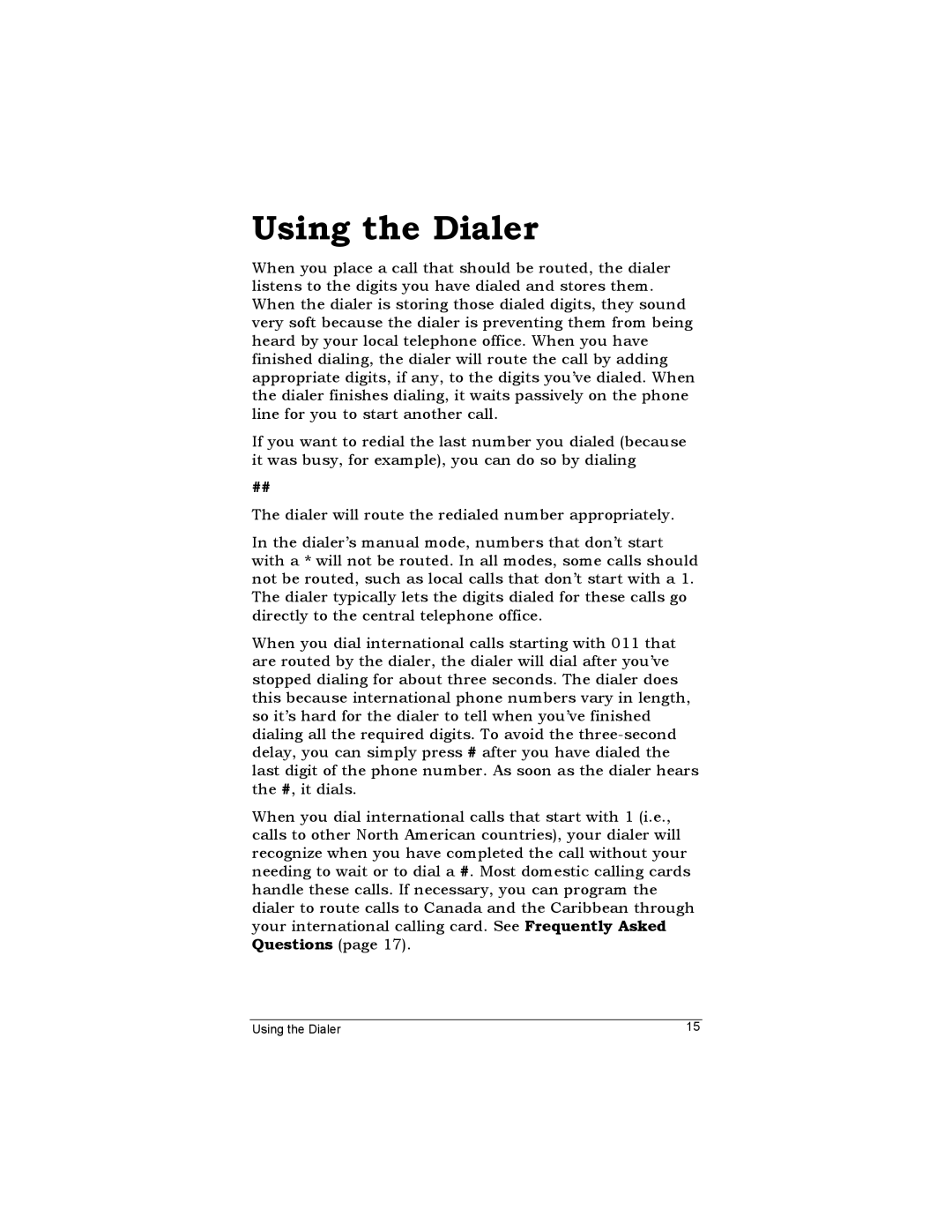Using the Dialer
When you place a call that should be routed, the dialer listens to the digits you have dialed and stores them. When the dialer is storing those dialed digits, they sound very soft because the dialer is preventing them from being heard by your local telephone office. When you have finished dialing, the dialer will route the call by adding appropriate digits, if any, to the digits you’ve dialed. When the dialer finishes dialing, it waits passively on the phone line for you to start another call.
If you want to redial the last number you dialed (because it was busy, for example), you can do so by dialing
##
The dialer will route the redialed number appropriately.
In the dialer’s manual mode, numbers that don’t start with a * will not be routed. In all modes, some calls should not be routed, such as local calls that don’t start with a 1. The dialer typically lets the digits dialed for these calls go directly to the central telephone office.
When you dial international calls starting with 011 that are routed by the dialer, the dialer will dial after you’ve stopped dialing for about three seconds. The dialer does this because international phone numbers vary in length, so it’s hard for the dialer to tell when you’ve finished dialing all the required digits. To avoid the
When you dial international calls that start with 1 (i.e., calls to other North American countries), your dialer will recognize when you have completed the call without your needing to wait or to dial a #. Most domestic calling cards handle these calls. If necessary, you can program the dialer to route calls to Canada and the Caribbean through your international calling card. See Frequently Asked Questions (page 17).
Using the Dialer | 15 |
